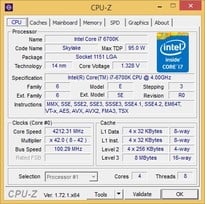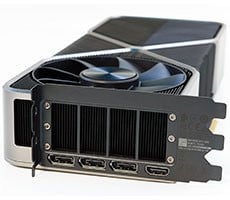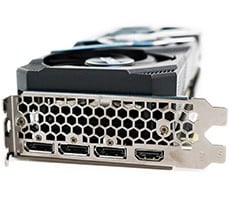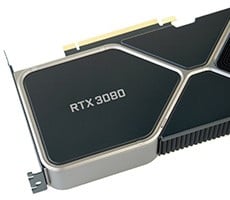Intel Core i7-6700K And Z170 Chipset Review: Skylake For Enthusiasts
In the meantime, we’ve got the flagship Core i7-6700K on the test bench today, paired to a killer new motherboard from ASUS and some speedy DDR4 memory. As you’ll see on the pages ahead, this new platform offers a potent combination of performance an efficiency. Take a gander at the specifications and main features below and we’ll dig a little deeper on the pages ahead...
Update 11/18/2015: We recently took a look at Intel Skylake-U performance in its notebook incarnation, here with the Lenovo Yoga 900 ultrabook. In a 15 Watt TDP envelope, Skylake-U offers some of the best performance we've seen in a notebook processor to date, at lower power consumption. Skylake-U offers 20 - 30% better graphics performance and a solid 5 - 10% increase in CPU throughput in the same power envelope but with better, more fine-grained clock gating features for lower overall power consumption. Make sure you check it out, here.
|
| # of Cores | 4 |
| # of Threads | 8 |
| Processor Base Frequency | 4 GHz |
| Max Turbo Frequency | 4.2 GHz |
| TDP | 91 W |
| Processor Graphics | Intel HD 530 |
| Graphics Max Dynamic Frequency | Up To 1.15 GHz |
|
The Intel Core i7-6700K's full specifications are listed above. It is a quad-core CPU that can processes up to 8 threads simultaneously (4C/8T), thanks to Intel’s HyperThreading feature. Other features include a new DX12-capable HD 530 series graphics engine, along with a number of other things carried over from previous generation Intel processors like Smart Cache and QuickSync, though the new encoding engine is also capable of accelerated HVEC encoding in hardware.
In terms of its packaging, the Core i7-6700K looks just like other Intel LGA based processors, though Skylake is packing 1151 pins. The heat-spreader design on the top is the same as previous-gen parts, but the underside has a slightly different pad configuration. The array of caps and pads in the center of the underside are in a different arrangements than Haswell and Broadwell-based processors too.
We don’t have many details on the HD 530 series GPU built-into the Core i7-6700K, but performance is only marginally better than the HD 6000 series, and part (or all) of the increase may come by way of the increased bandwidth afforded by the platform’s use of higher-speed DDR4 memory. The HD 530 series GPU core can boost up to 1150MHz and can power up to 3 displays simultaneously. The new graphics core is also DX12-compatible, which is a new capability versus the previous gen, but more details will likely be released at IDF.
The Core i7-6700K has a base clock of 4GHz with a max turbo frequency of 4.2GHz, though with SpeedStep the chip will drop down to only 800MHz when idle. It has a TDP of 91W and over 8MB of cache on-board, 256K of L1 (64K per core), 1MB of L2 cache (256K per core), and 6MB of L3, which is a similar cache hierarchy to Ivy Bridge.
Though Skylake is a new microarchitecture, it obviously borrows heavily from its predecessors. Some new additions to Skylake, however, include independent clock domains, so there are no more PEG/DMI ratios required, and FIVR—Intel's Fully Integrated Voltage Regulator technology—is gone. Those changes, in addition to its architectural tweaks, result is a processor that can be overclocked using fine-grained BCLK frequency manipulation, just like the pre-Sandy Bridge days. We’ll talk more about overclocking a little later.

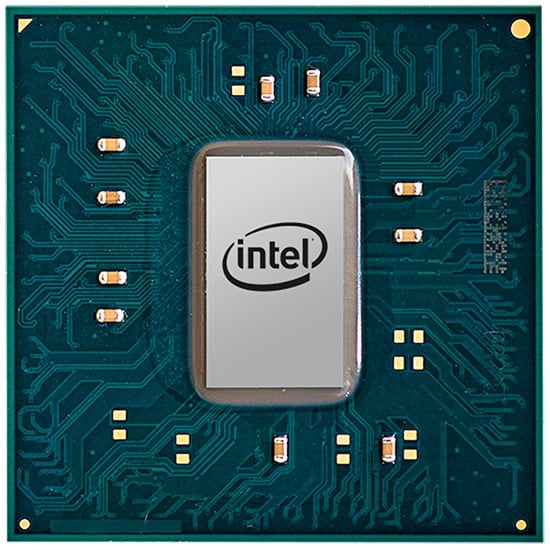
 Intel Turbo Boost Technology 2.0: Dynamically increases the processor frequency up to 4.2 GHz when applications demand more performance. Speed when you need it, energy efficiency when you don’t.
Intel Turbo Boost Technology 2.0: Dynamically increases the processor frequency up to 4.2 GHz when applications demand more performance. Speed when you need it, energy efficiency when you don’t.


